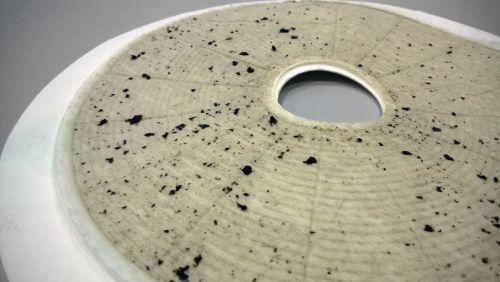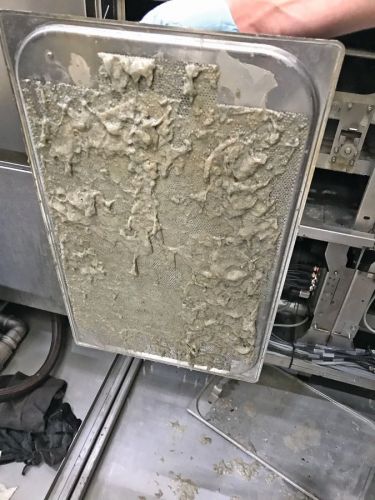Well then, you can skip this article and move on to other topics. I would now like to take all remaining readers into a small niche of surface technology. Troubleshooting the cause of process faults is difficult.
The complex processes in surface technology make the whole thing more difficult and when, for example, black deposits clog the filter surface in a filter system, people puzzle over how this can happen and what the cause is. What reacts here and how can it be prevented? You think about it and look for the solution in inorganic chemistry. Oh - that could be the right starting point. The blinkers that we have partly trained ourselves to wear must first be taken off.
 GusChem- Close-up of the contaminated filter
GusChem- Close-up of the contaminated filter
 Microorganisms settle in every aqueous system. Microorganisms that live on radioactivity have been discovered in the leachate from gold mines in South Africa! Black smokers, e.g. in the Mid-Atlantic Ridge, are teeming with life, even though no sunlight penetrates into the depths. Thermal water at over 300 °C gushes out of the vents and the pressure at a depth of 3000 m should crush everything! In electroplating, the conditions could not be more extreme, but microorganisms can be found in all areas here too. Whether this is noticeable or leads to problems only becomes apparent later.
Microorganisms settle in every aqueous system. Microorganisms that live on radioactivity have been discovered in the leachate from gold mines in South Africa! Black smokers, e.g. in the Mid-Atlantic Ridge, are teeming with life, even though no sunlight penetrates into the depths. Thermal water at over 300 °C gushes out of the vents and the pressure at a depth of 3000 m should crush everything! In electroplating, the conditions could not be more extreme, but microorganisms can be found in all areas here too. Whether this is noticeable or leads to problems only becomes apparent later.
A typical example from surface technology is sulphide-forming microorganisms. They feel at home wherever no (air) oxygen can reach them: in pipes, filter systems or in sludge collectors. The black deposits are partly metal sulphide, partly precipitates of hardening agents and the extracellular polymeric substance EPS, which permeates the entire coating. The microorganisms can be quickly identified by the smell of rotten eggs. They extract the sulphur for the sulphide from sulphate, for example, which is used as a conducting salt in many electrolytes.
Cleaning alone will not get rid of them. It is important to remove all retreats such as limescale deposits or incrustations and to thoroughly disinfect the system. G. & S. - WS has proven its worth here as a system cleaner.
System cleaning must then be repeated at appropriate intervals or the system can be protected with a suitable biocide such as our G. & S. - WA.


